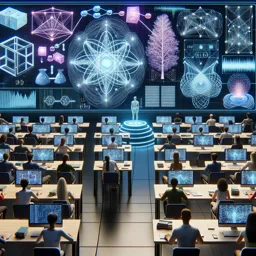Introduction
Generative Artificial Intelligence (AI) is revolutionizing the creative landscape, enabling innovations that span from visual arts to product design. By automating certain aspects of creation and amplifying human imagination, generative AI is reshaping the way industries approach creativity and design.
What Is Generative AI?
Generative AI refers to algorithms capable of producing new content—such as text, images, music, or even code—by learning patterns from large datasets. Unlike traditional AI, which focuses on classification or prediction, generative AI generates original outputs that mimic human-like creativity. Examples include Generative Adversarial Networks (GANs) and transformer-based models.
Transforming Art And Design
Generative AI allows artists and designers to explore endless creative possibilities. From producing AI-generated artworks to assisting in the design of prototypes, these tools spark innovation. Many creators now collaborate with AI to produce unique exhibitions and experimental projects that combine human intuition with machine intelligence.
Impact On Media And Entertainment
In media and entertainment, generative AI powers new forms of storytelling and content creation. It can compose music, write scripts, create visual effects, and even design immersive gaming environments. By automating repetitive tasks, AI frees creators to focus on narrative, emotion, and originality.
Changing Product Design And Development
Generative AI accelerates product design by generating multiple design variations, optimizing functionality, and improving efficiency. Engineers and architects use AI-driven tools to create innovative, sustainable solutions, from advanced building structures to next-generation consumer products.
Challenges And Ethical Considerations
While generative AI enhances creativity, it also raises concerns about authenticity, copyright, and ethical use. Misuse of AI-generated content or lack of transparency can lead to misinformation or intellectual property disputes. Establishing responsible practices is essential.
Conclusion
Generative AI is transforming creative industries by expanding the boundaries of human imagination and enabling groundbreaking solutions. As the technology evolves, balancing innovation with ethical considerations will be key to unlocking its full potential.

































